Echeverias are fun and easy-to-maintain succulent plants. They are versatile and don’t require much from their owners. These fun little plants like to change colors when happily stressed from cold or direct sun exposure. Most produce wonderful flowers during the summer months, as well. They are incredibly resilient and easy to propagate.
If you want to add some echeverias to your succulent garden or collection, there is a wide variety to choose from. They come in different colors, as well as different leaf shapes and orientations.
All you need to be successful with these plants is a sunny window and some well-draining soil. Here are some of my favorite varieties of echeveria that will work great in your succulent garden.
Perle von Nurnberg
‘Perle von Nurnberg’ is one of the most popular varieties of echeveria. Florists love this cultivar for its soft, gray-blue leaves with their rounded edges and pointed tips. The leaves grow in a finely ordered rosette. A delicate dusting of fine white powder makes the plant even more soft and pretty.
This variety has a reputation for being a big bloomer. A plant can send up several flower spikes in a year. These slender flower spikes produce coral-colored blooms that look beautiful in floral arrangements. It will bloom best in full sun.
Neon Breakers Desert
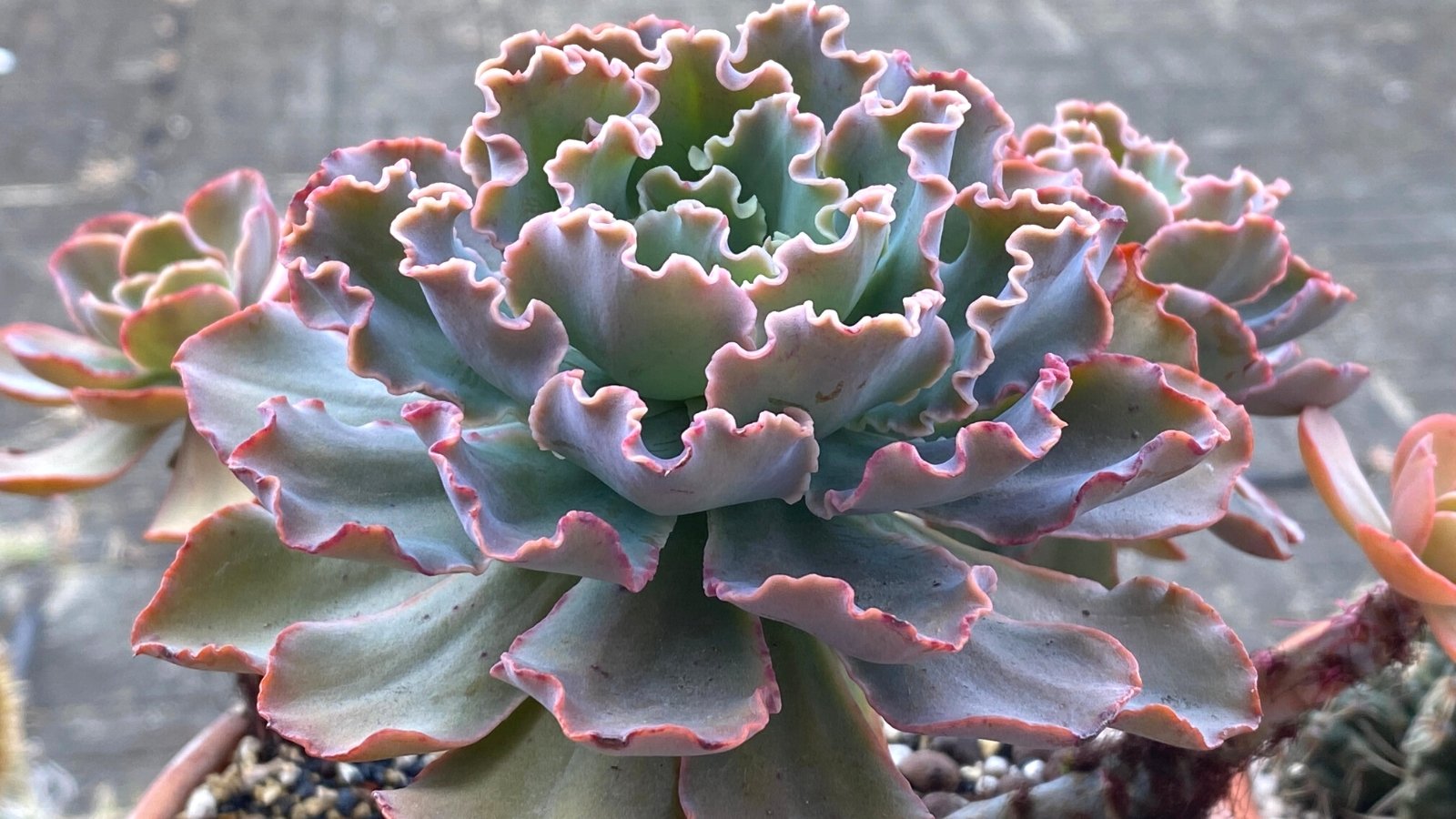
‘Neon Breakers’ has fun leaves with lightly ruffled leaves. The leaves start pale grey-green, but with enough sun, they age to a silvery-violet color. Many varieties of echeveria have this characteristic. Stress from sunlight and cold can cause their leaves to blush.
This is a small cultivar, reaching only six inches tall at maturity. It is fast-growing and produces purple flowers in late summer and early fall. ‘Neon Breakers’ will tolerate full sun, but if it looks very stressed, try partial shade.
Blue Bird
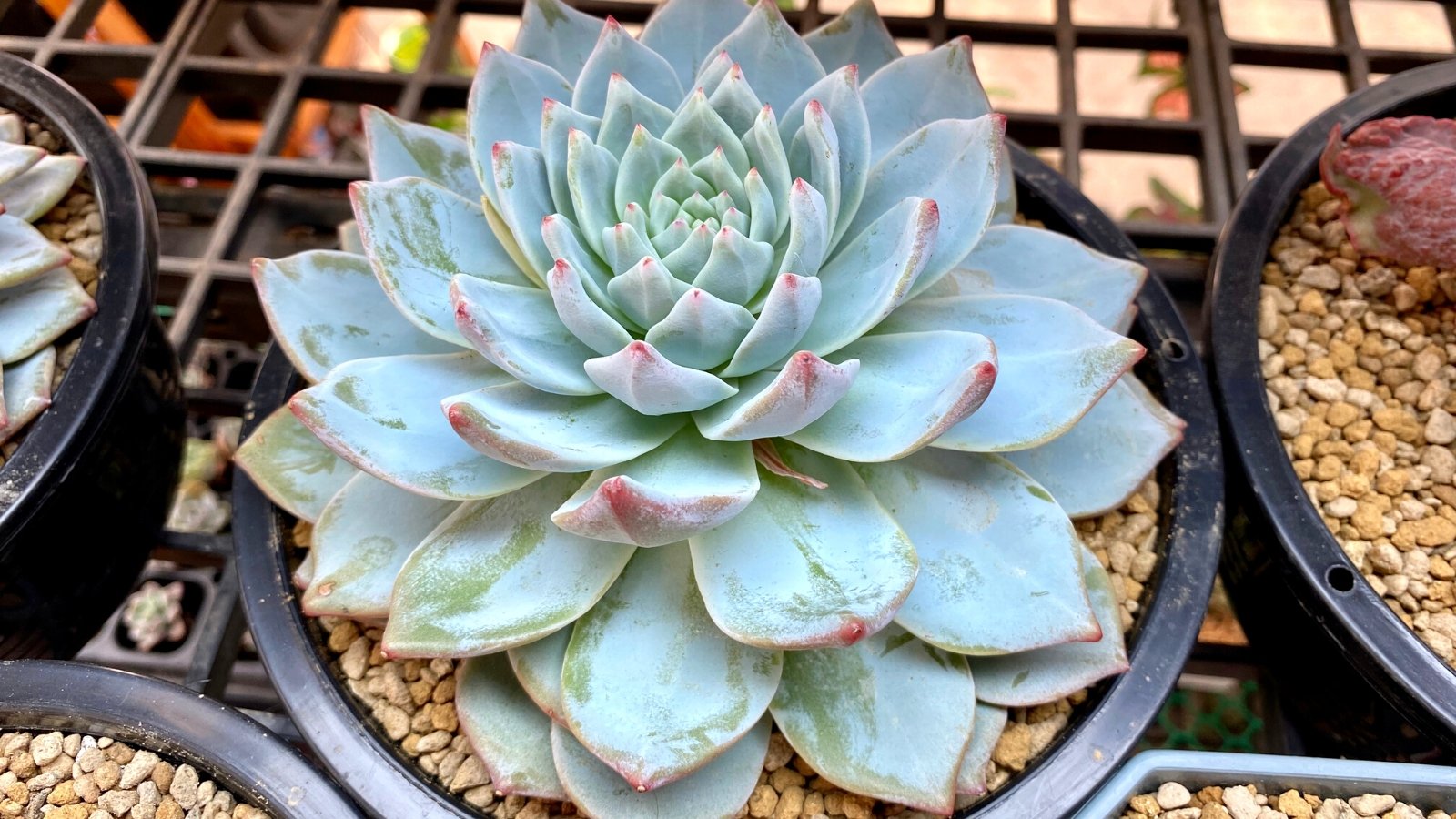
The plump, blue-green leaves on ‘Blue Bird’ make this a fun cultivar. These echeverias have a pillowy appearance with pointed ends and smooth, rounded margins. The leaves turn pink around the edges in cool weather, adding interest in the winter.
This variety has the fine, white, powdery appearance common to the genus. It can tolerate full sun to bright, indirect light when grown indoors. Pink flowers bloom in early fall.
Berkeley Light
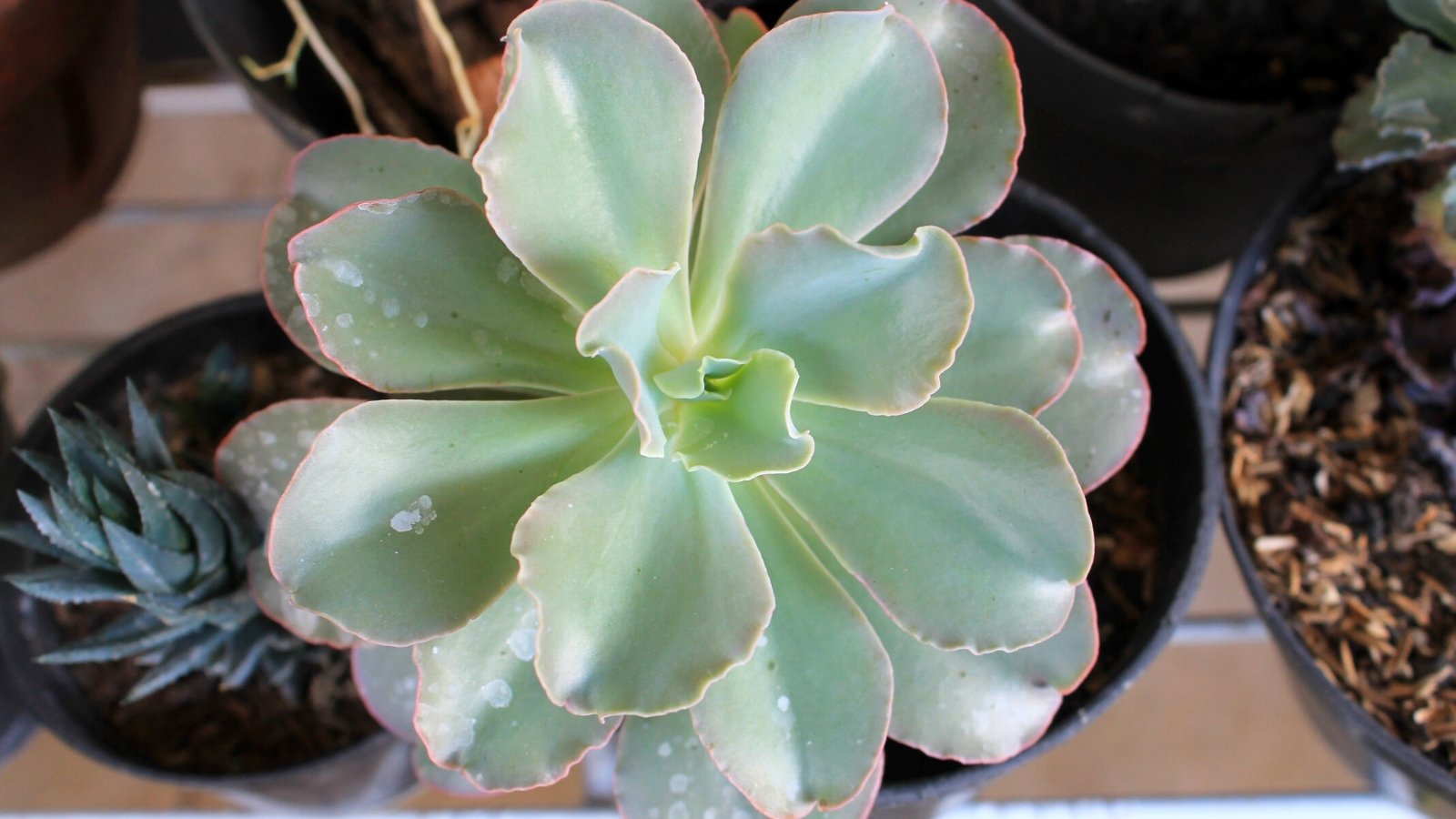
This unique and beautiful cultivar has luminous, variegated leaves. These lightly ruffled leaves are white with celadon green accents and a slight pink blush around the edges. The leaves form a loose rosette, which grows to about four inches tall.
‘Berkeley Light’ performs best in bright but indirect sunlight. It will tolerate some direct sun, but this can stress the plant, causing more pink coloration. More than its flowers, this variety’s leaves are its most distinguishing characteristic.
Raspberry Ice
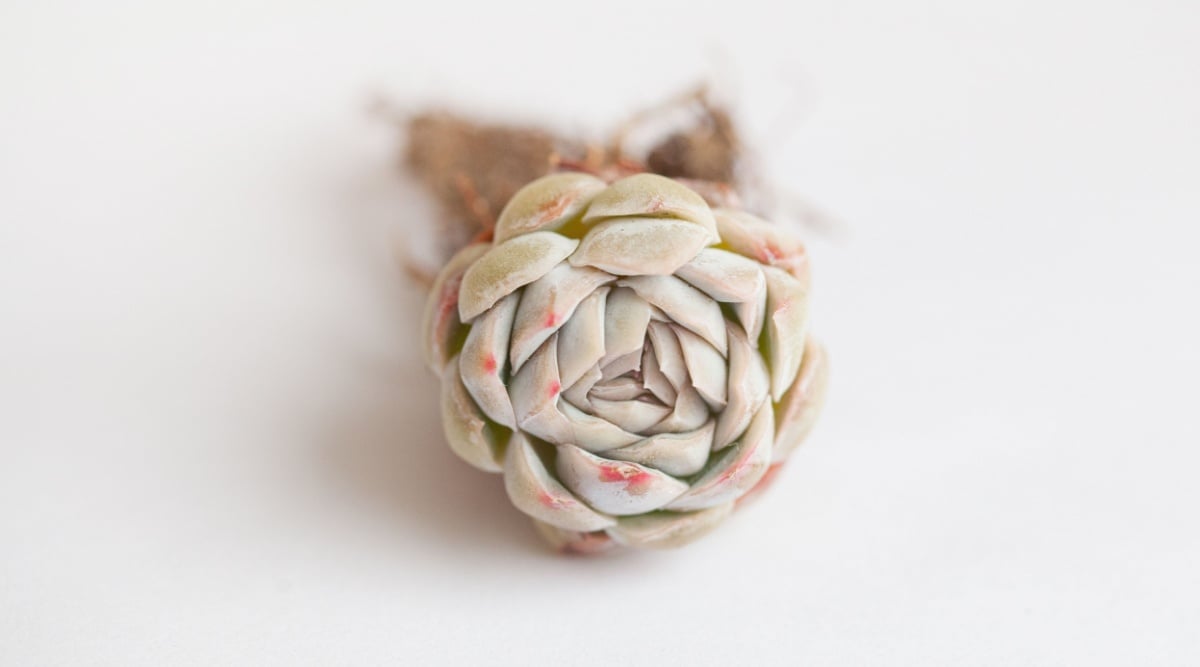
Another variety that is popular with florists, ‘Raspberry Ice’ has interesting leaves. The leaves are smooth and pointed on tight rosettes that sometimes remain closed. These rosettes are round rather than opening flat, although some do open fully.
‘Raspberry Ice’ prefers bright, indirect sunlight in the summer but can tolerate some direct sun in fall and winter. The leaves are pale green in the center and coral pink on the outside. When this variety blooms, its flowers are a lovely shade of yellow.
El Encino
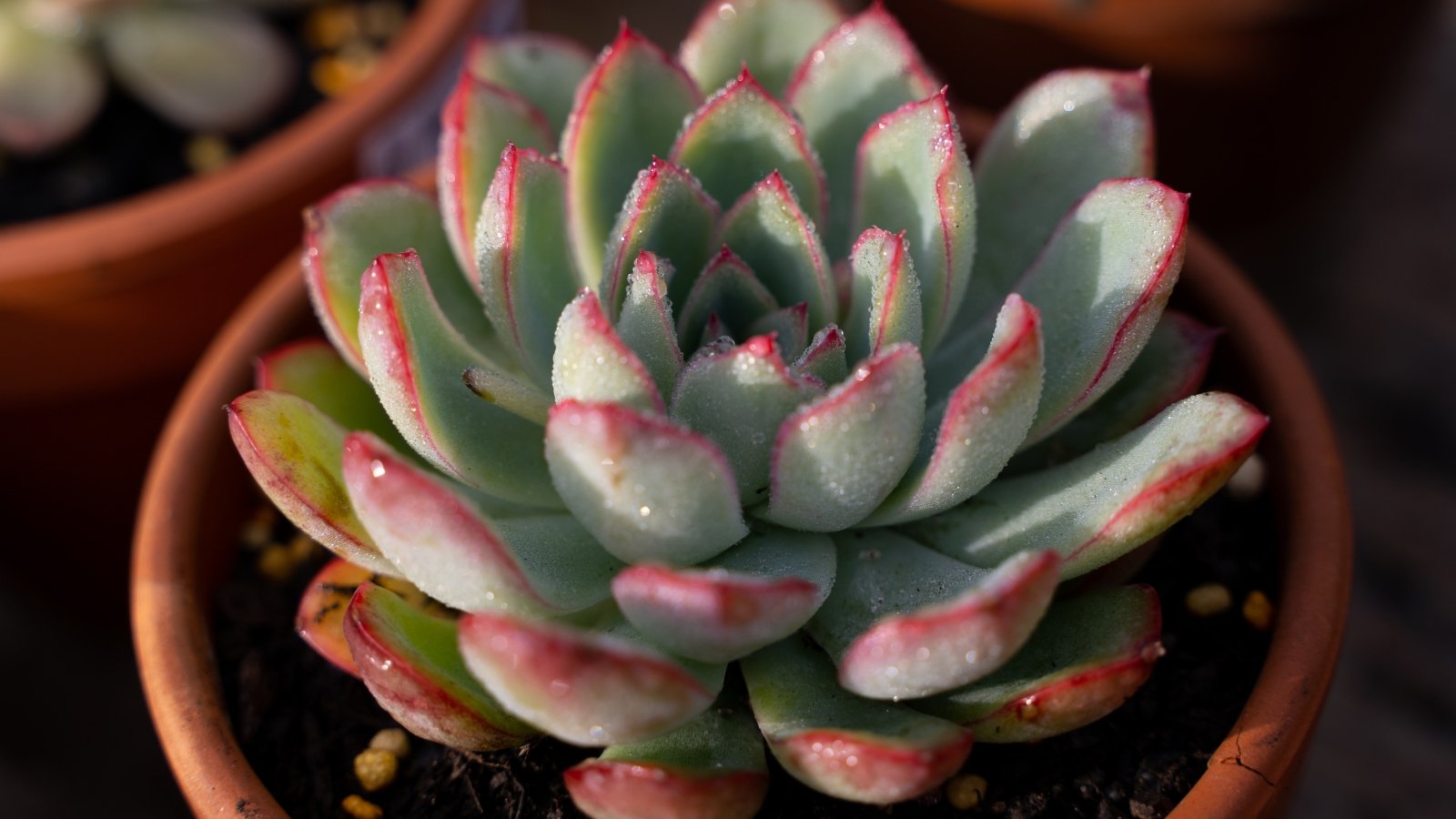
‘El Encino’ is a colorful little echeveria. Each rosette consists of many tightly organized leaves. These lovely leaves are pale green with bright reddish-orange edges and small, pointed tips. This variety remains small and neat looking. The leaves will change color under stress, taking on more of a reddish tint.
Make sure to plant your echeverias in loose, well-drained soil. Echeverias like a bit more moisture than most succulents. Don’t hold back on watering frequently if your plants are outdoors. Water more sparingly in the winter when the plant is dormant.
Cinderella
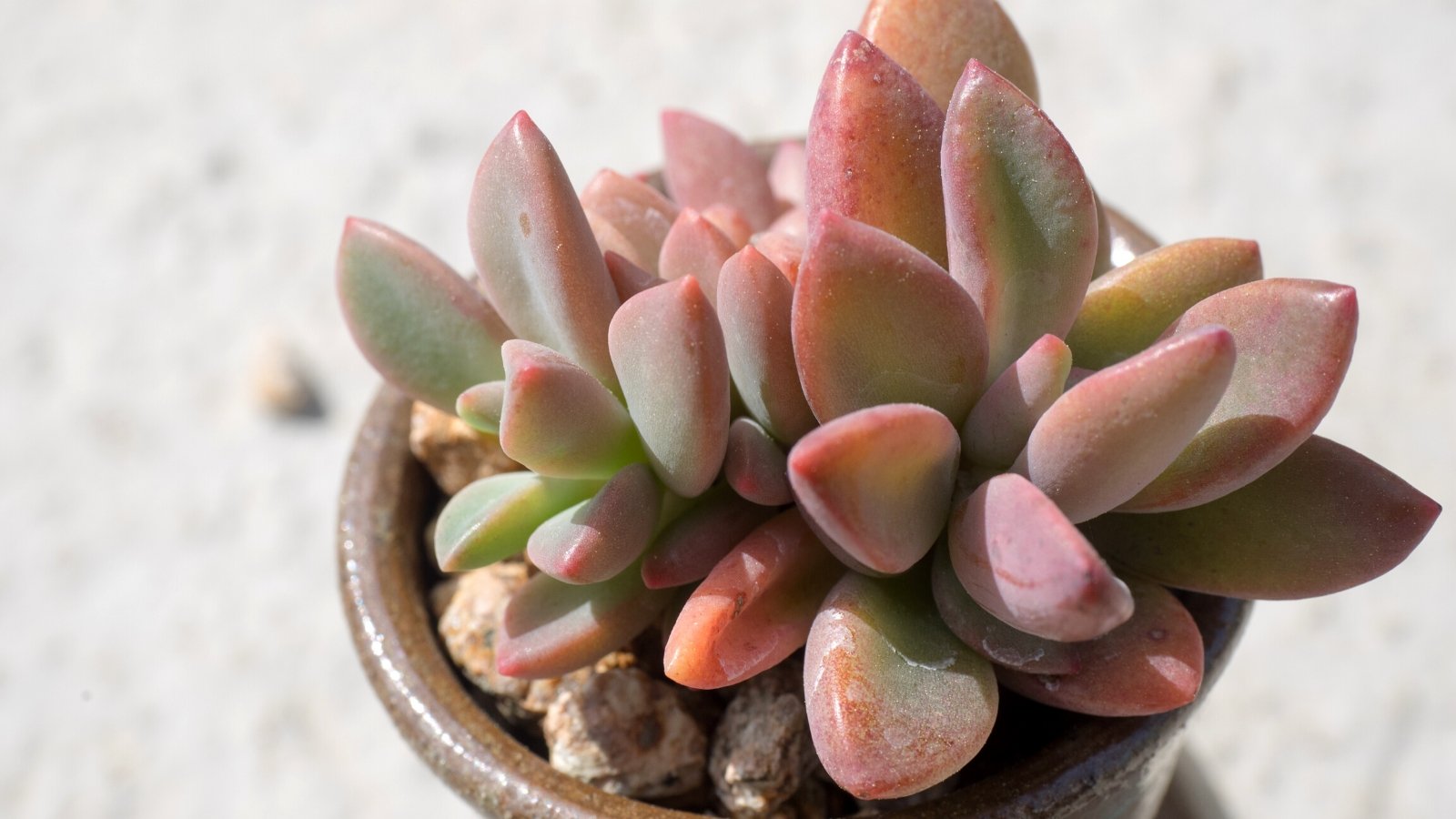
‘Cinderella’ has a unique appearance to the leaves. These moderately tight rosettes have longer, yellowish-green leaves that become more green toward the center. The edges of these leaves are deep red and pointed at the ends. Some specimens also have flecks of red on the outside of leaves.
This is a rare cultivar that can be difficult to find, making it great for the collector. As with most varieties, giving this plant more sunlight will deepen the red tones in its leaves. This is a sign of stress, but a small amount of stress is unlikely to do any damage.
Blue Mist
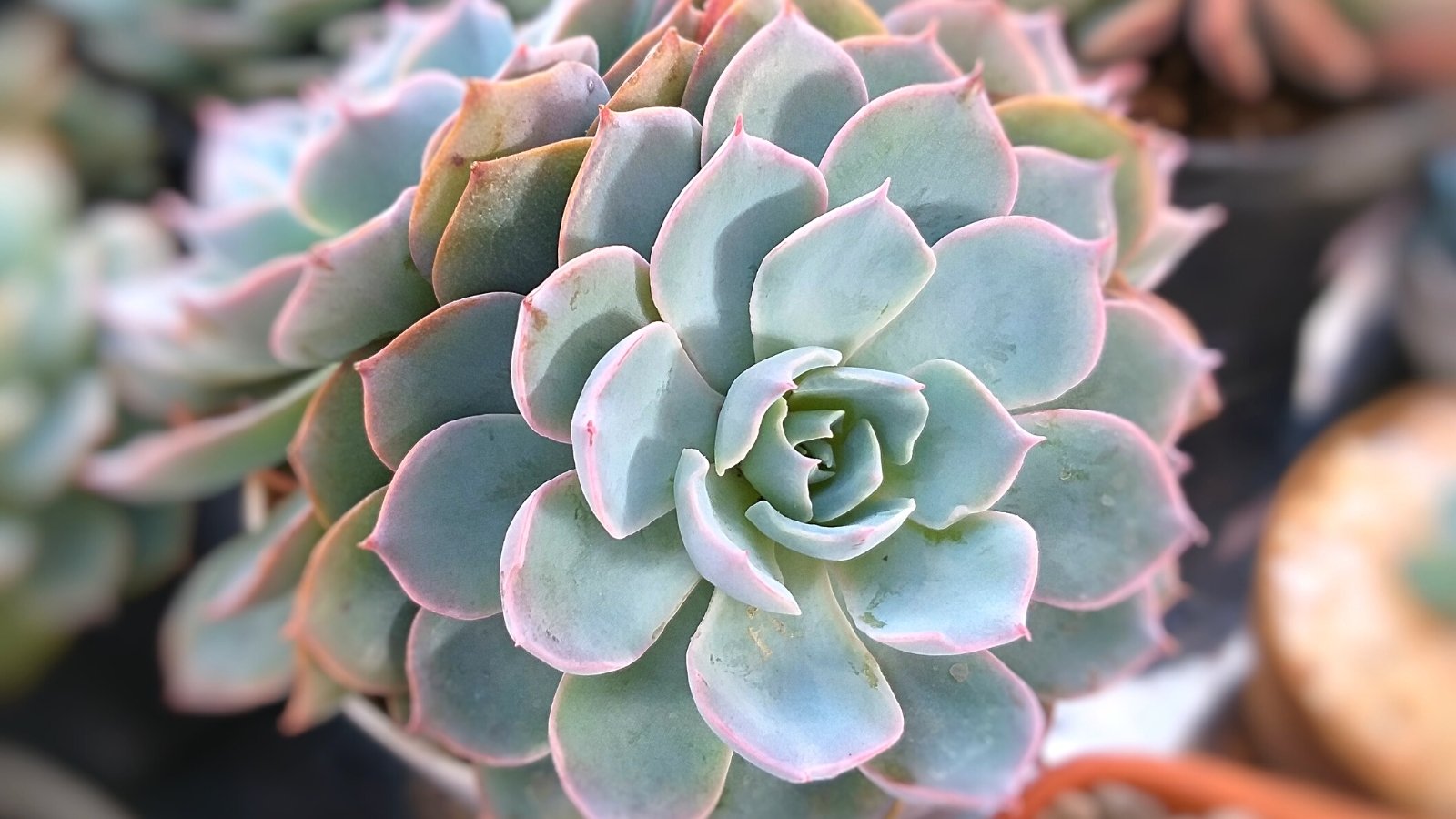
The delicate blue-green shade of “Blue Mist’s’ leaves is breathtaking. The tight rosettes of nearly translucent leaves are very lightly tipped with pink. In cool winter weather, the outer leaves will take on a faint pink blush, as well. A rosy hue just tinting the outer edges makes this plant even more beautiful in dormancy.
In the summer, ‘Blue Mist’ will produce spikes topped with pretty yellow flowers. To maintain the soft blue tones of the leaves, this variety shouldn’t get direct sun. Bright, indirect light is best for this variety.
Ramillete
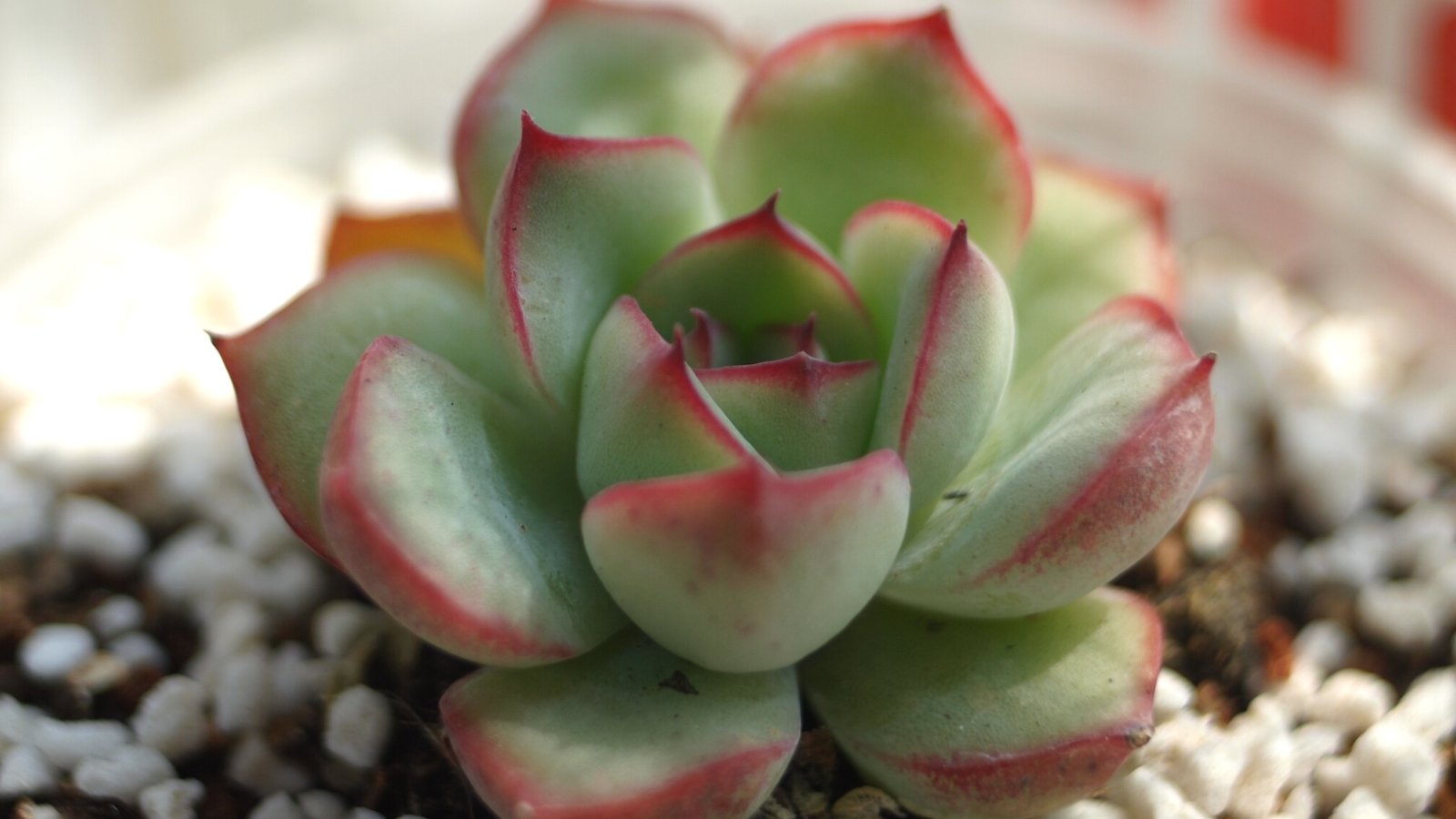
‘Ramillette’ is an easy-care echeveria that is tolerant of different light conditions. The tight rosette of leaves is apple green with light red accents on the tips and back of the leaves. This hybrid variety is great at reproducing. It will put out offsets regularly so that you can propagate and share this plant with friends.
This cultivar will appreciate some cool weather in the fall and blush accordingly. Bring it indoors before a frost, though. These are not cold hardy. This is a good bloomer, as well. In summer, expect many flower spikes sporting yellow and orange, bell-shaped flowers.
Black Pearl
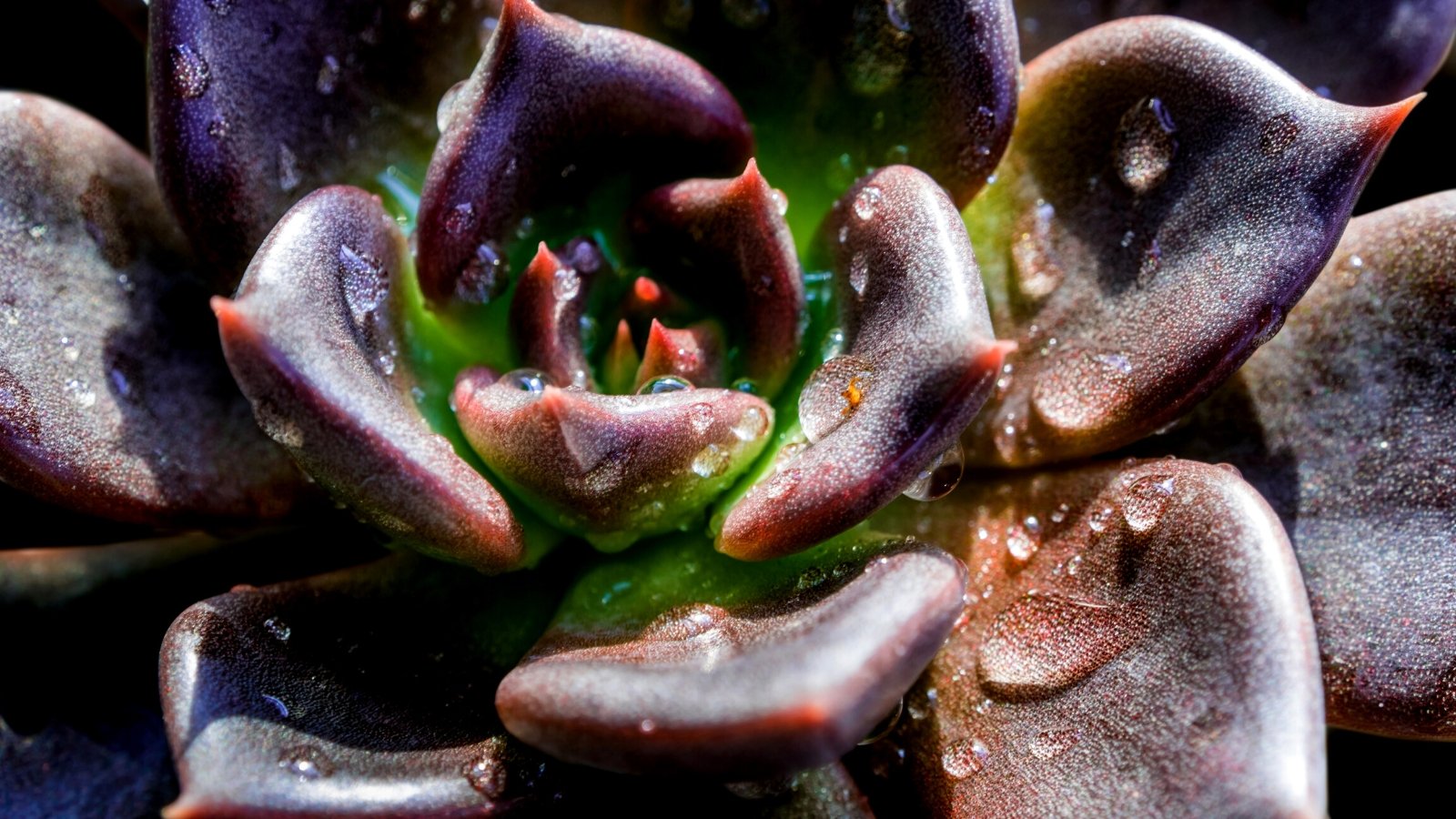
This is a newer hybrid that resembles the popular ‘Black Prince’ but with smaller, more rounded leaves. The shape of ‘Black Pearl,’ as evidenced by the name, is more spherical than other types that open flat. The fleshy, deep purple leaves are short and curl upwards toward the center.
The leaves will eventually open out, revealing bright green in the center but maintaining their dark purple ends. The surface of the leaves has a fine white fuzz. This protects the plant from harsh sun exposure.
Violet Queen
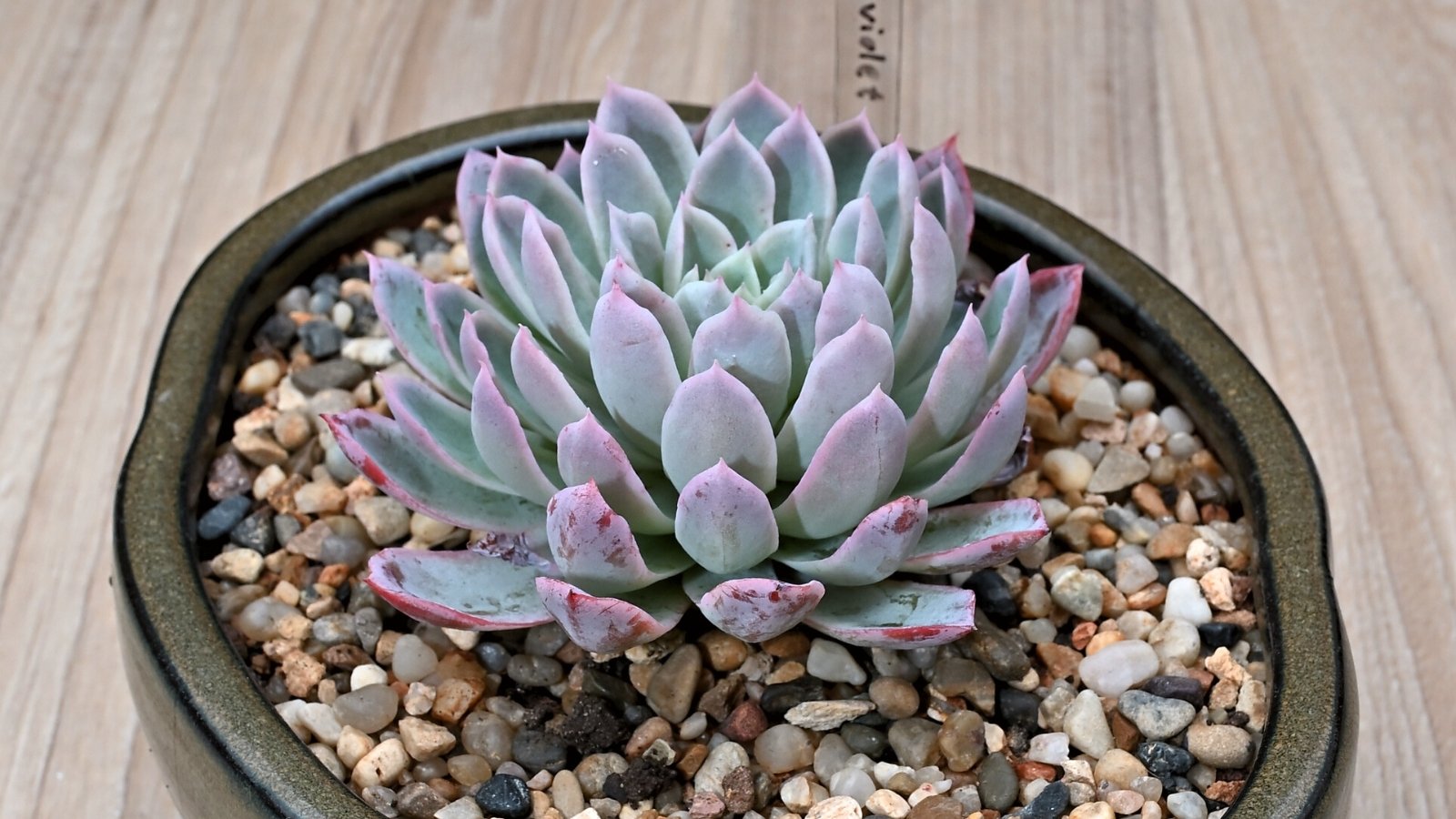
The name ‘Violet Queen’ is deceptive, as this plant is a dusky green color and not purple. The smooth edges of the leaves have a red tint that intensifies in cold weather or with sun stress. The leaves on this variety are a bit different from other types. They are narrower at the ends and very pointed. These pointed leaves arch backward, giving the plant an interesting flair.
‘Violet Queen’ creates offsets readily, quickly forming a large clump. Since echeveria are monocarpic, they don’t die after flowering. The plants can grow fairly large and produce numerous flower spikes at the same time.
Afterglow
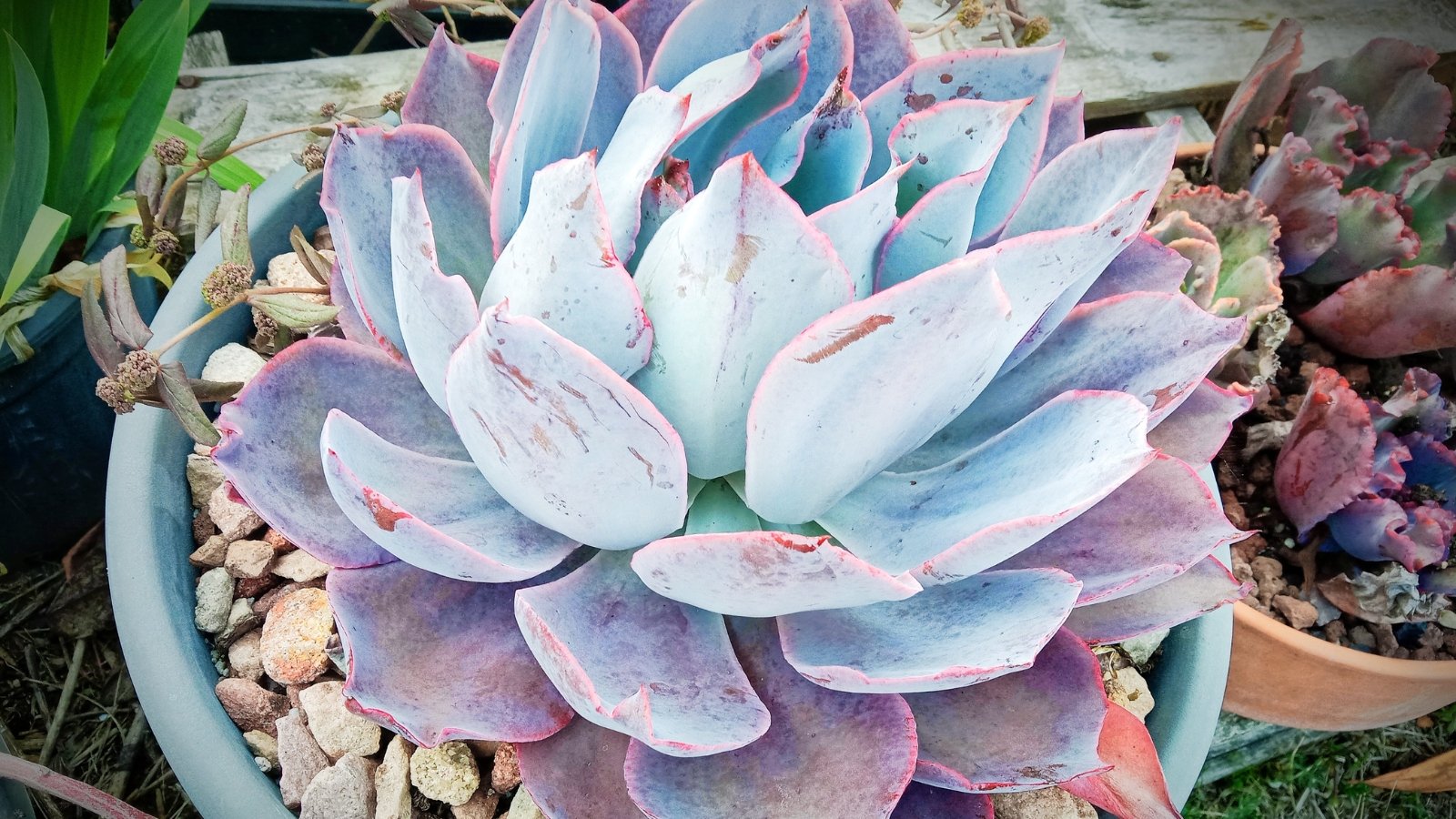
‘Afterglow’ is a larger variety, with rosettes of lightly ruffled leaves that grow as large as 12 inches in diameter. The leaves are violet with pink edges and just a slight blue tint toward the center. This is a vigorous grower.
Give your ‘Afterglow’ full sun to get the best color. The leaves will deepen in color when exposed to direct sun. This is a large and striking cultivar. It produces tall stalks of orange flowers in the summer. Many gardeners remove these, but I think they are beautiful, and pollinators love them.
Sofia
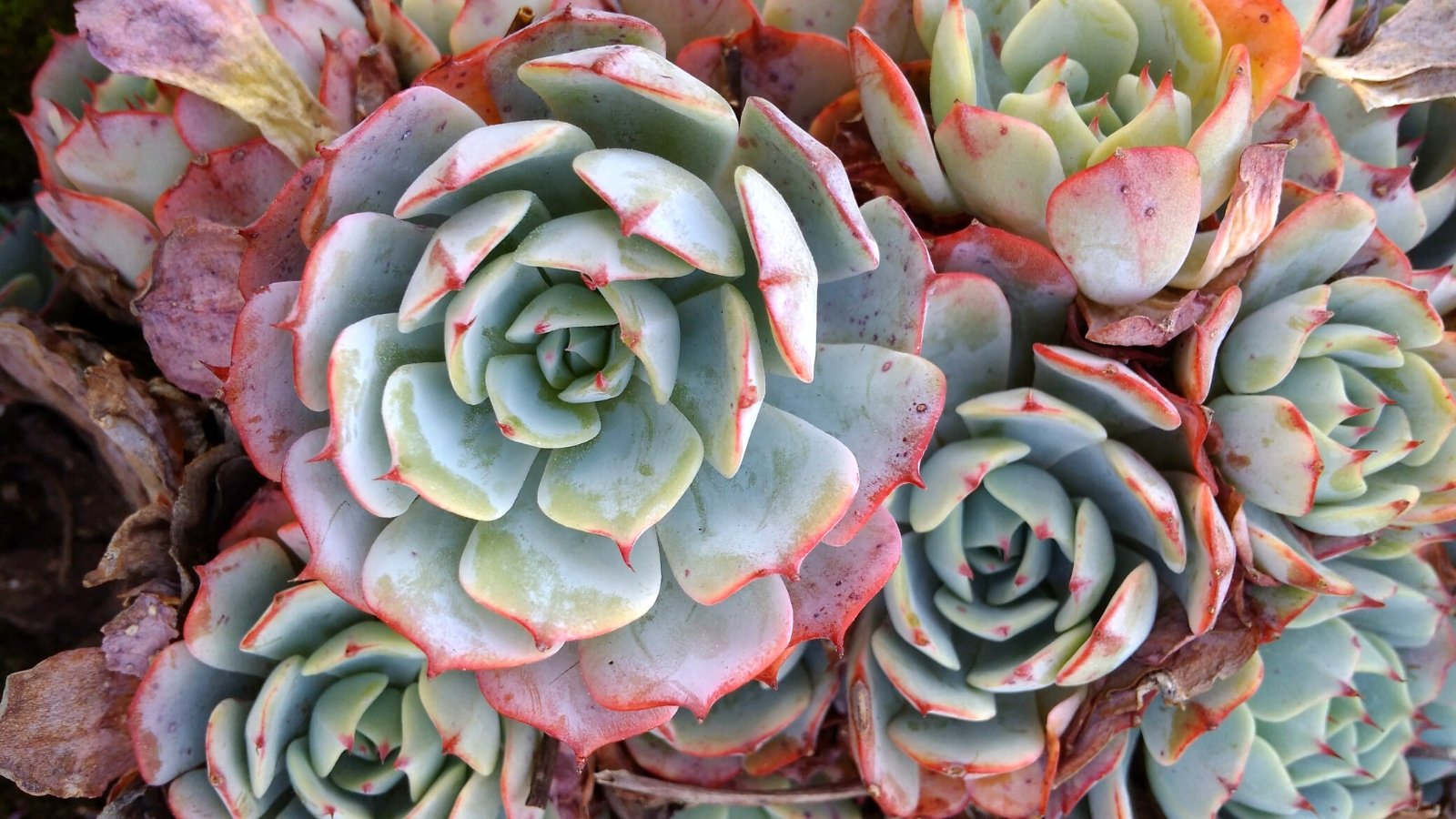
‘Sofia’ is an unassuming and sweet little echeveria. It has soft green leaves with a dusting of fine white hairs that protect it from intense sun exposure. The very tips of the pointed leaves have a faint blush that will deepen with cold or light exposure.
This is a robust grower that can reach four inches tall and five inches wide. In the summer, ‘Sofia’ produces stalks of red, tubular flowers. Let your echeveria’s soil dry between watering to avoid root rot.
Cubic Frost
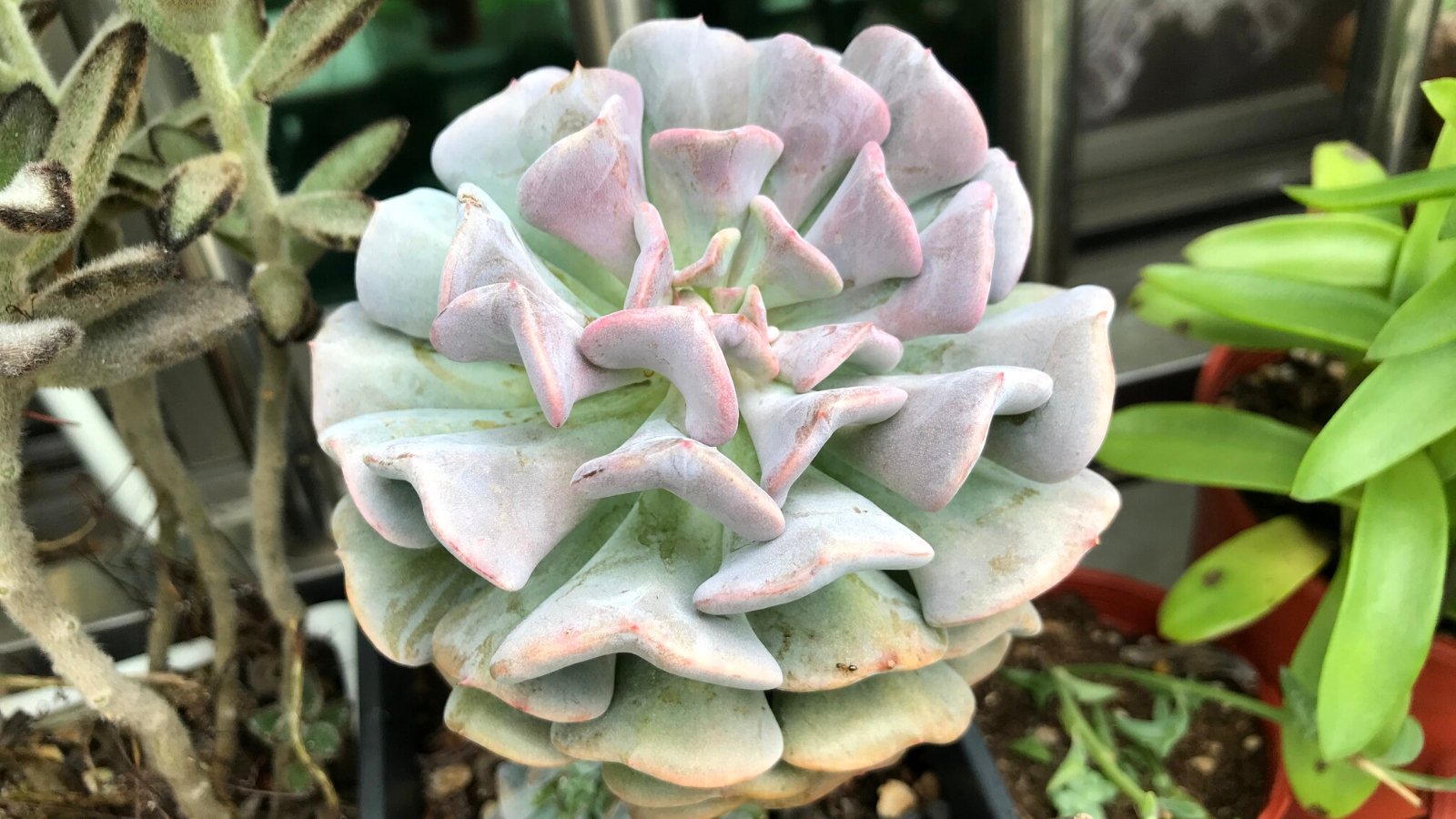
This hardy hybrid has a distinctive appearance that sets it apart from other echeverias. ‘Cubic Frost has curved leaves with a central rib and squared-off ends. The leaves are very pale gray-green, with a faint dusting of white powder on the surface.
The frosted appearance brought about by the farina, or white powdery coating, is an important defense mechanism. This coating helps to protect the plant from harsh, direct sunlight. While full sun is appropriate for these plants during cooler weather, in the summer, they should have some shade in the afternoon.
Galaxy Blue
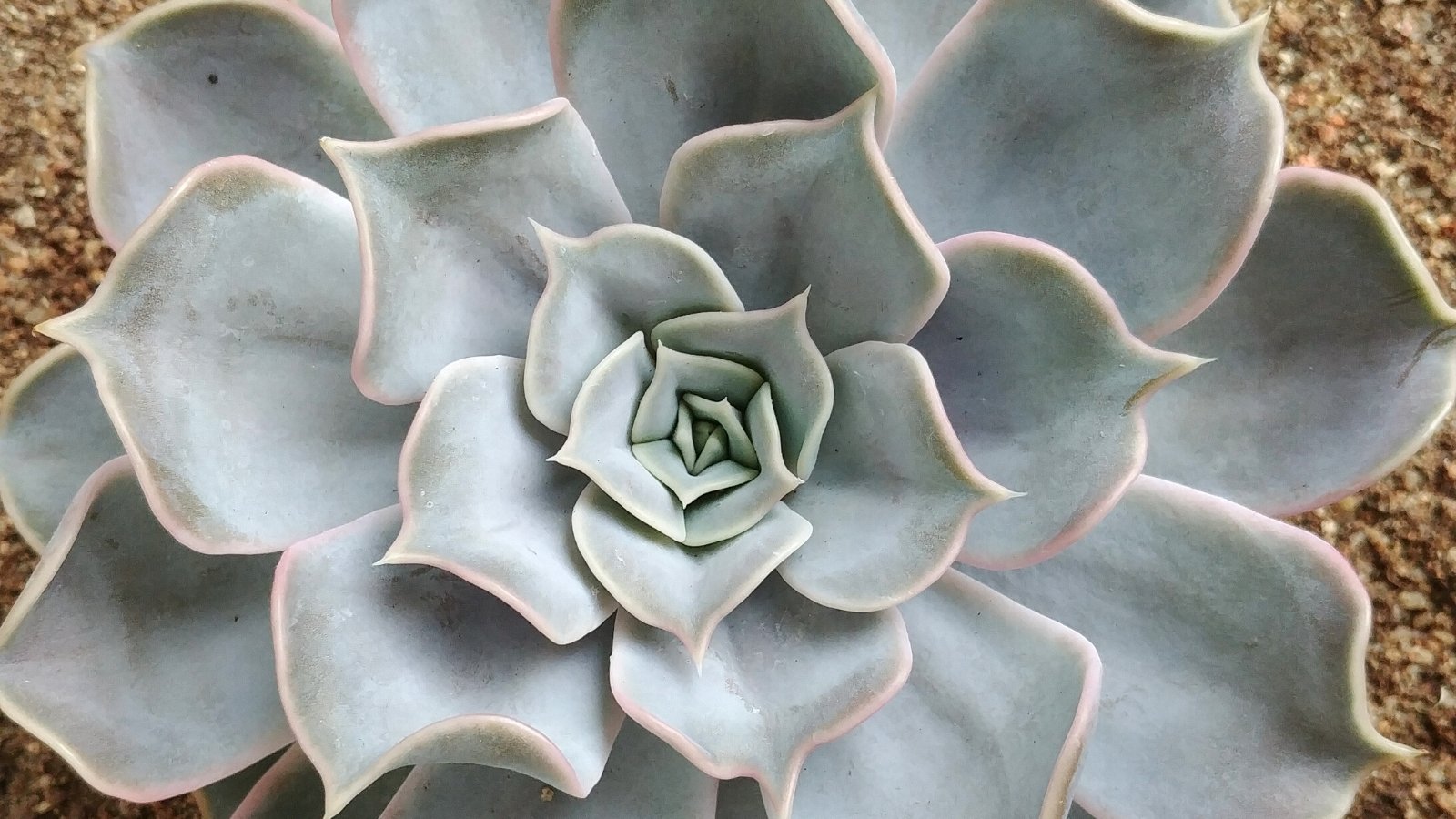
‘Galaxy Blue’ is an eye-catching cultivar. This plant has steely blue-green leaves. They are wavy and curve slightly upward at the ends. The shape of this variety is elegant and refined, with smooth edges and the slightest point to leaf ends.
This variety of echeveria grows close to the ground. But rosettes can be up to eight inches wide. The loosely organized petals lie open, and the plant produces spikes of yellow flowers in the summer.
Lipstick
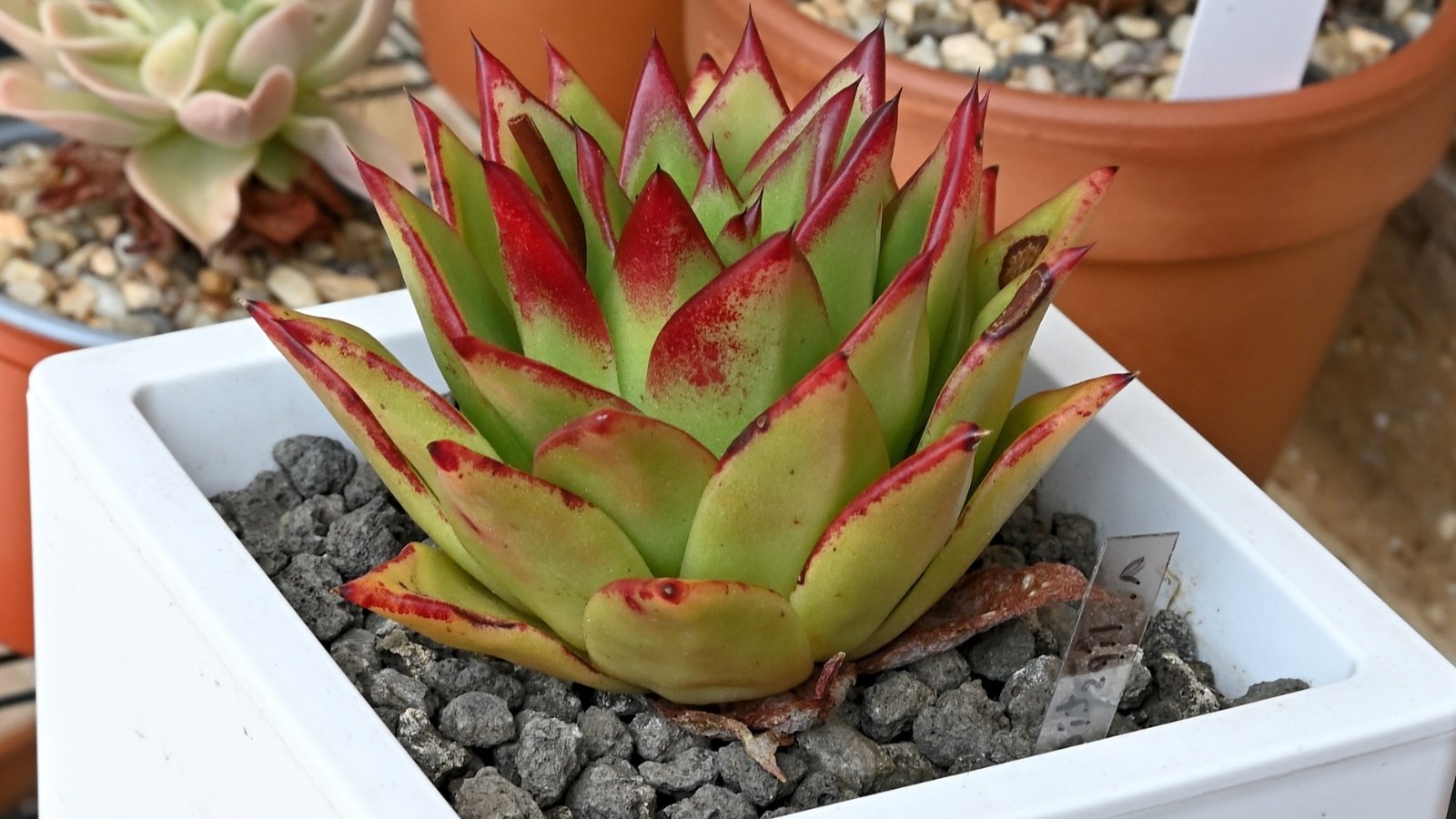
‘Lipstick’ is a distinctive variety with longer, more pointed leaves that lack the rounded edges common to the genus. The long, lime-green leaves have dark red edges that intensify when the plant experiences stress. For echeveria plants, some stress is good, as it intensifies their lovely colors.
In addition to the red edges of the leaves, the flowers are red, as well. This plant readily creates offsets, making it simple to propagate and share with friends. When watering, make sure to soak your echeverias well, and then allow them to dry before watering again.
Black Tetra

‘Black Tetra’ is a hybrid from Korea. It is a newer variety and can be somewhat difficult to find. It is low-growing and has striking coloration to the leaves. The leaves age to a deep gray-green but emerge bright red. They have a light dusting of fine white hairs that make the leaves look soft and velvety.
Its relative rarity makes this a great cultivar for collectors. As with other types, ‘Black Tetra’s’ colors will intensify with direct sunlight. This variety turns into a very deep burgundy color when stressed.
Blue Wren
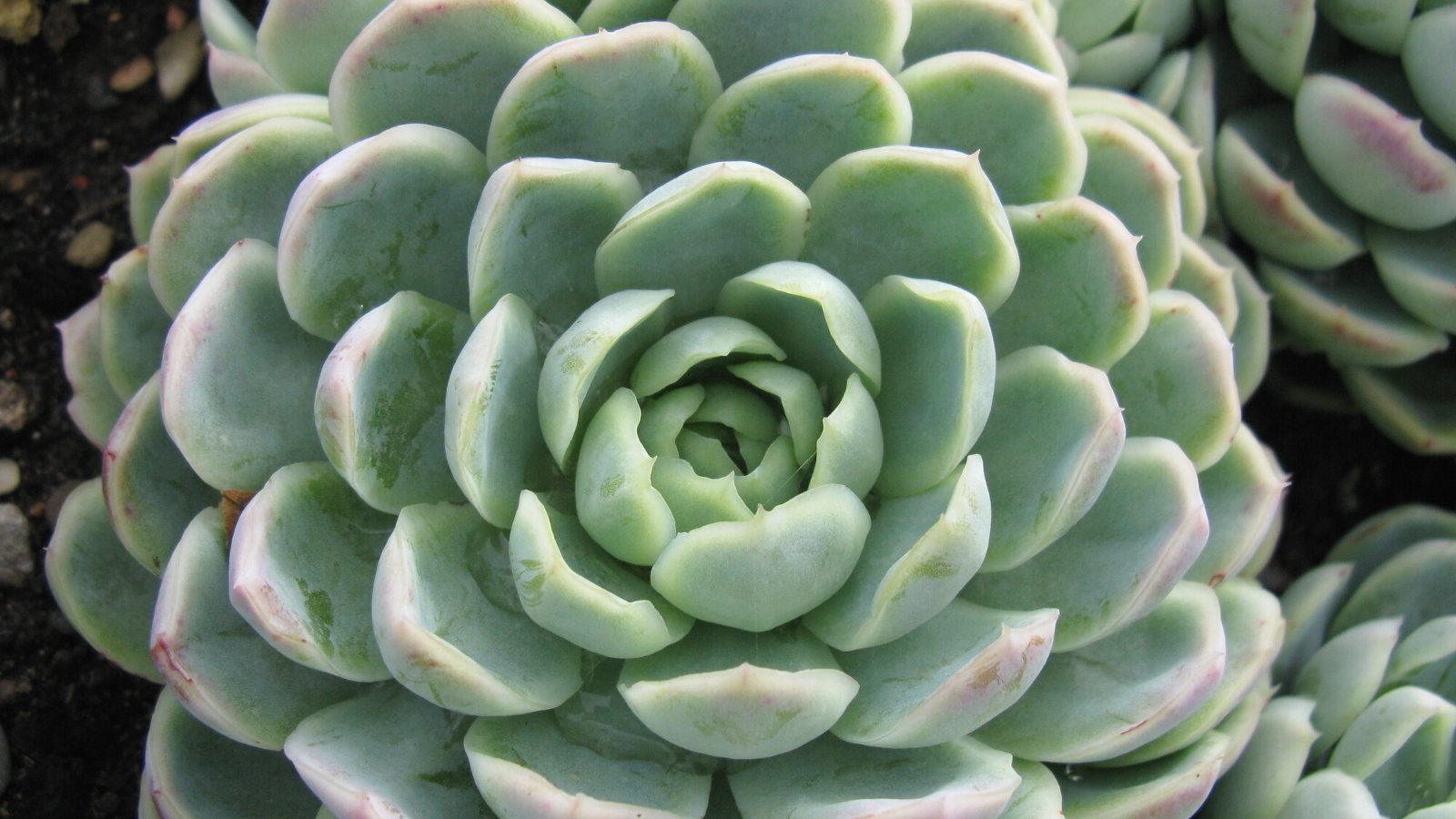
‘Blue Wren’ is an adorable variety of echeveria with extra plump, fleshy leaves. The rounded leaves have a slightly pointed tip that has a faint blush. The blush will deepen when the plant is exposed to cold or direct sunlight.
This blue-green cultivar has a fine waxy coating to the leaves. The low-growing rosette grows wider than it does tall. The leaves open out fully, creating a cup shape as the plant matures.
Raindrops
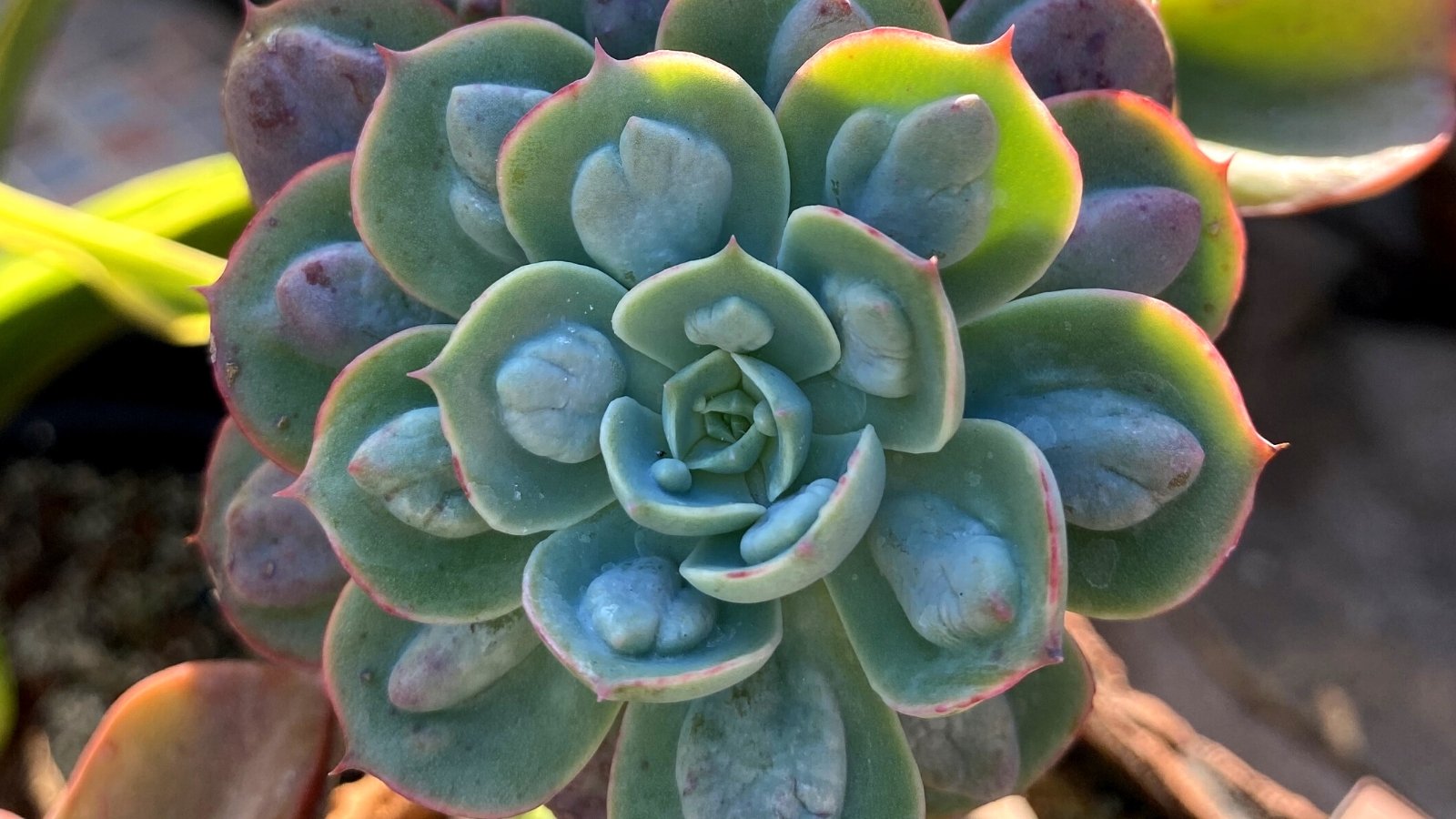
This fun hybrid has small round bumps on its leaves, earning it the name ‘Raindrops.” These bumps grow most pronounced when the plant is not exposed to direct sun. The leaves are flat, and teardrop shaped, in a pleasant shade of blue-green.
The red margins on the leaves are faintly pink, a color that intensifies with more light or cold temperatures. For well-developed bumps and a blush as well, give your ‘Raindrops’ bright, but indirect sunlight for most of the day.
Moon Stone

‘Moon Stone’ is a plump and fleshy variety with apple green, pointed leaves. The leaves are red on the edges, and stress intensifies the color. In fall, the entire plant takes on a brilliant vermilion tint.
Give ‘Moon Stone’ about four to six hours of direct sun daily. In summer, bright, but indirect light is best. This cultivar produces red flowers in the summer. Always overwinter your echeveria plants indoors unless you garden in zones 9-11.
Topsy Turvy
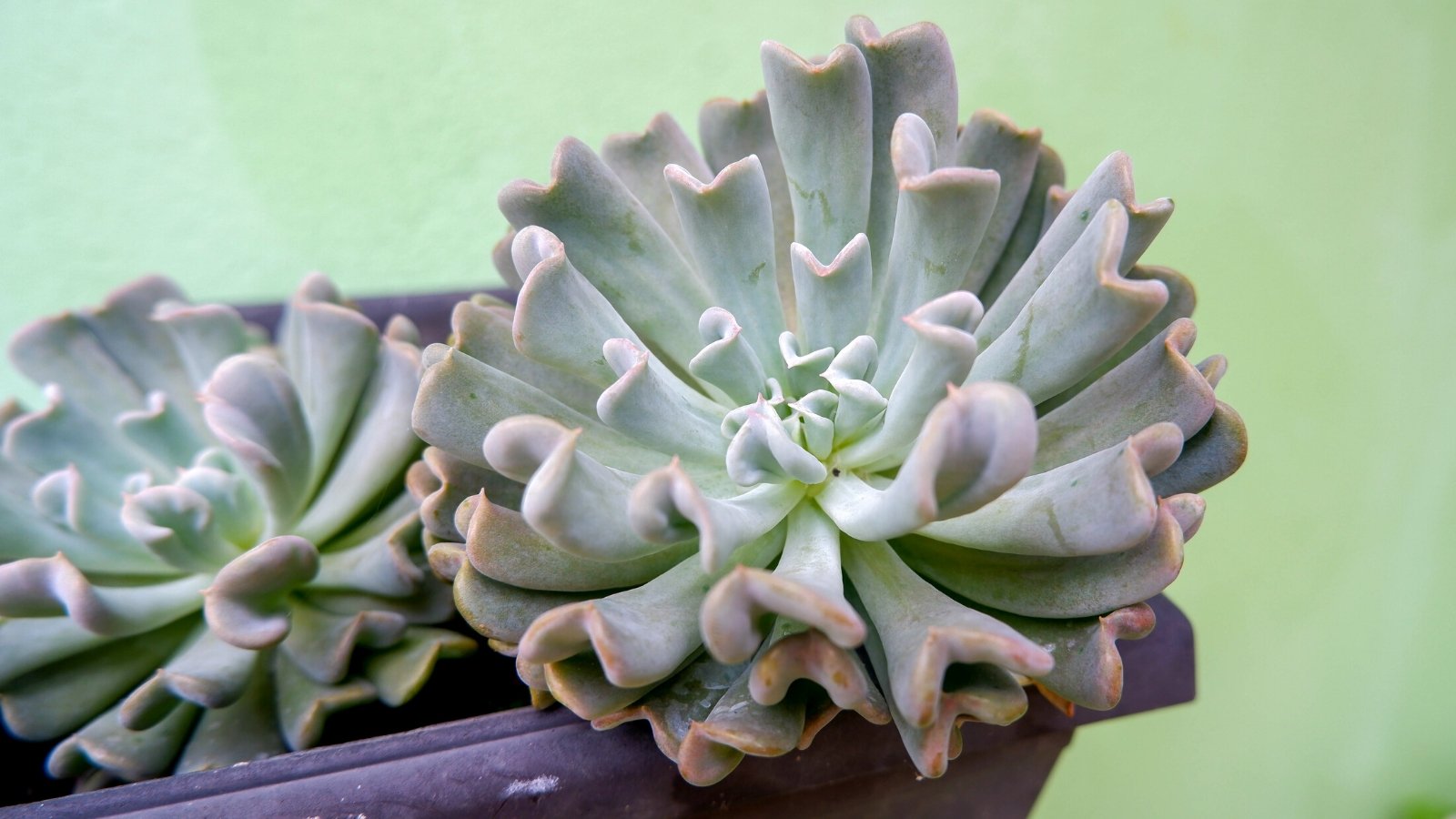
If you’re looking for a unique cultivar, ‘Topsy Turvy’ is a great option for the succulent garden. The long, slender leaves are pale gray-green. The most interesting characteristic of the leaves is their irregular order. The leaves have a ridge down the center and bend upwards or down toward the ground.
‘Topsy Turvy’ does a great job of producing offsets. This is an easy variety to propagate. The plant stays close to the ground rather than forming long stems. Flower spikes form in the summer and produce bright red flowers.
Black Knight
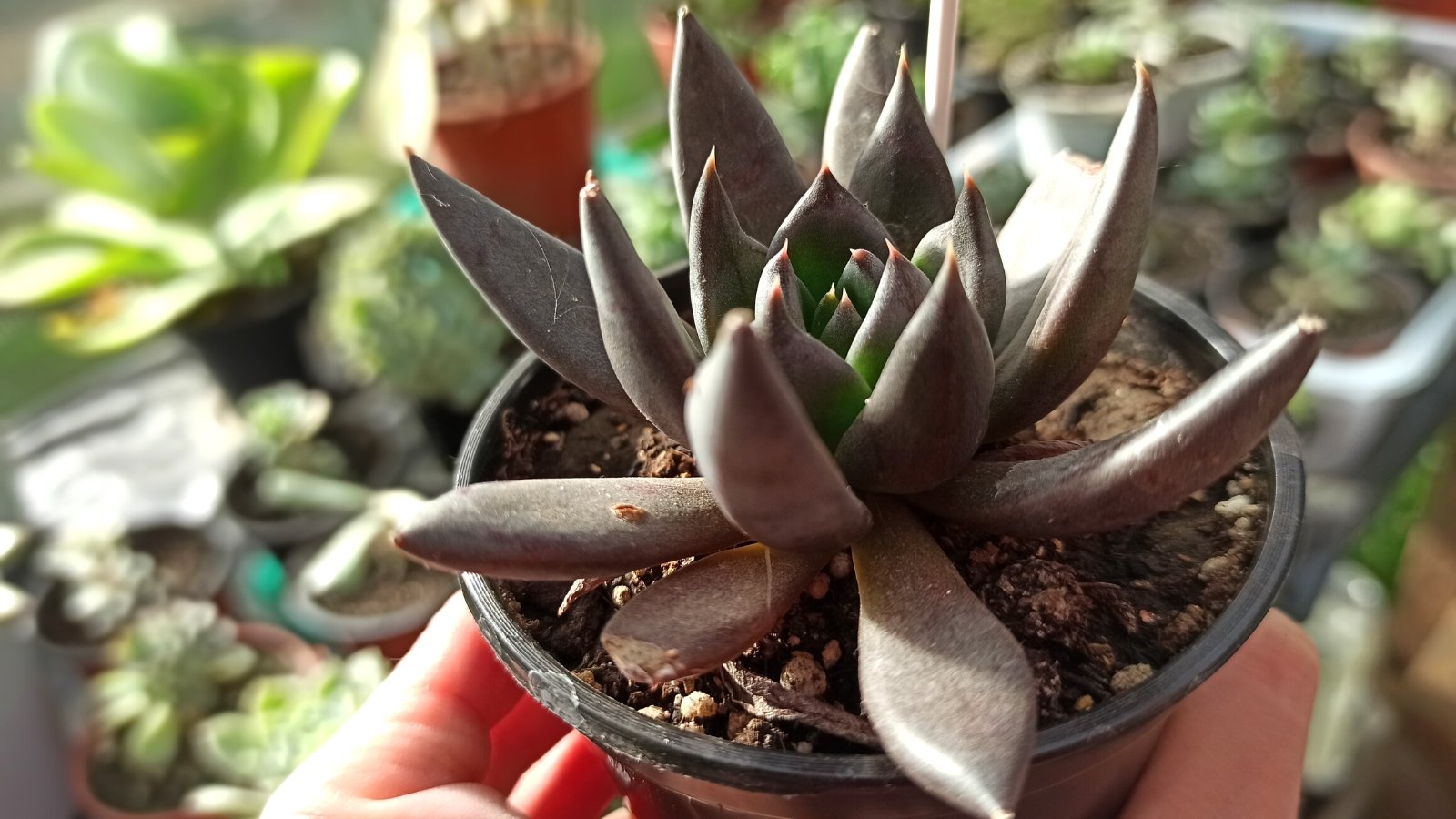
‘Black Prince’ is a very dark variety with nearly black leaves. This variety, however, is Black Knight. It makes an excellent specimen for the collector and looks wonderful in a succulent garden. For some extra contrast in a succulent arrangement, you can’t beat this interesting echeveria.
The leaves on ‘Black Knight’ are long and deeply pointed at the ends. The color is a deep purple-green, and when exposed to stress, the color deepens still. The flowers are bell-shaped and green with a red corolla.
Marcus
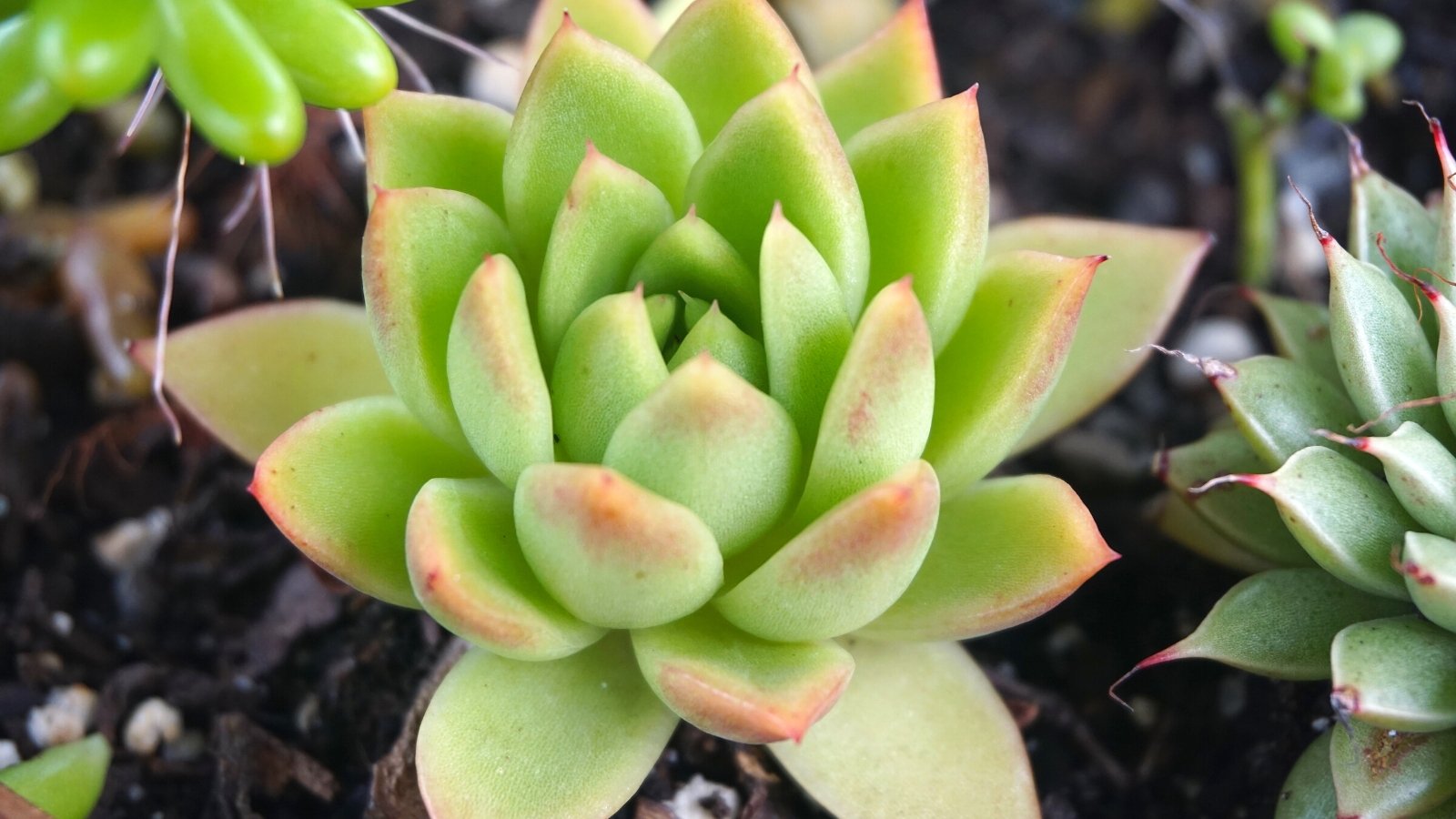
‘Marcus’ is a classic echeveria with smooth leaves that have pointed ends. The neatly arranged rosettes have just a hint of blush to the very edges and tips. This intensifies in cold or direct sunlight. This variety produces offsets readily, making propagation easy.
In terms of popularity, ‘Marcus’ is easy to find and known for its attractive form and colors. Its leaves are bright green and waxy, without the white fuzz that is common to the genus.
Heart’s Delight
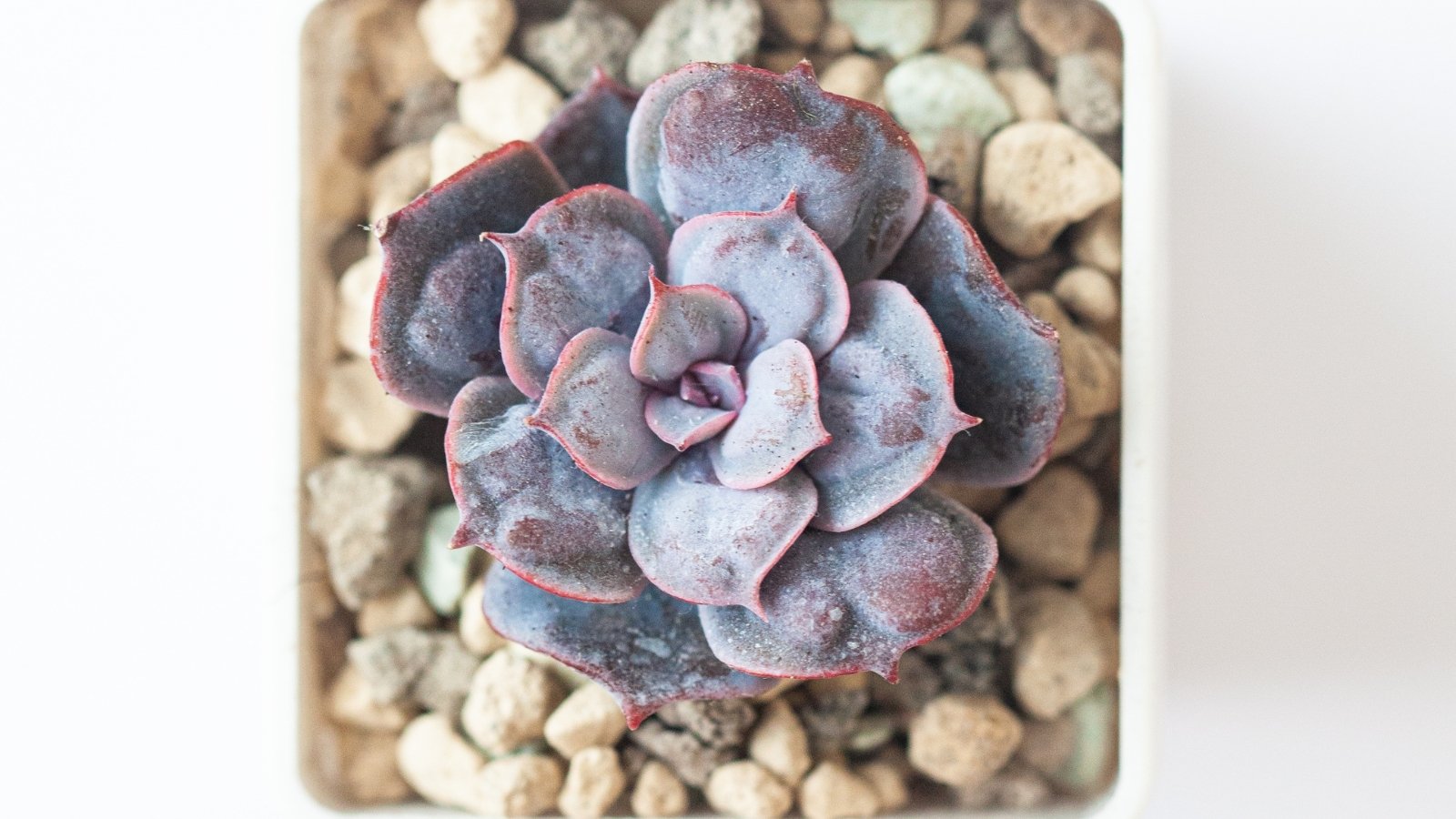
‘Heart’s Delight’ is a large variety with extra bumpy leaves. Similar to ‘Raindrops,’ this echeveria has what appear to be bumps or blisters on the surface of its leaves. The leaves are blue-green with a powdery finish. Where ‘Raindrops’ has small, fairly uniform bumps, ‘Heart’s Delight’ has more pronounced bumps.
This cultivar is a large one, it doesn’t grow tall, but the rosettes can grow up to eight inches wide. ‘Heart’s Delight’ is a fun conversation piece to add to your succulent garden. Its distinctive appearance is certainly eye-catching. In direct sun or chilly weather, the leaves blush pink. The flowers are pink, as well.
Silver Queen
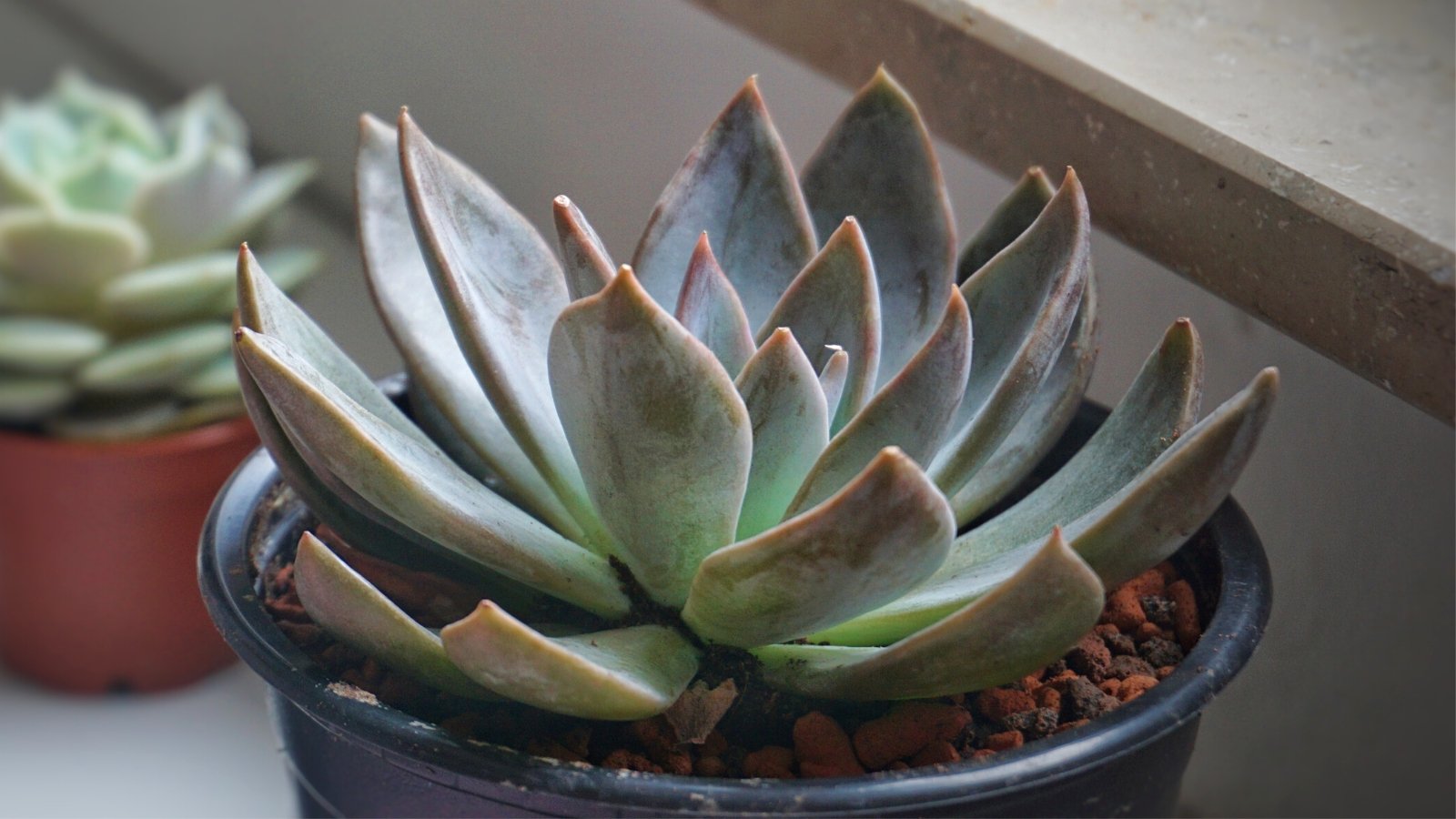
‘Silver Queen’ is an elegant cultivar with a unique leaf color. While most varieties of echeveria take on a red or purple hue from stress, this one starts out lavender. The silvery-purple leaves are long, curved, and pointed. This plant’s rosettes remain cup-shaped rather than opening out flat.
The leaves of this variety are more slender than most, and the rosettes can reach up to eight inches across. When stressed, ‘Silver Queen’ takes on a pink or coppery tone. In summer, it produces flower stems with clusters of pink blooms.
Purple Pearl
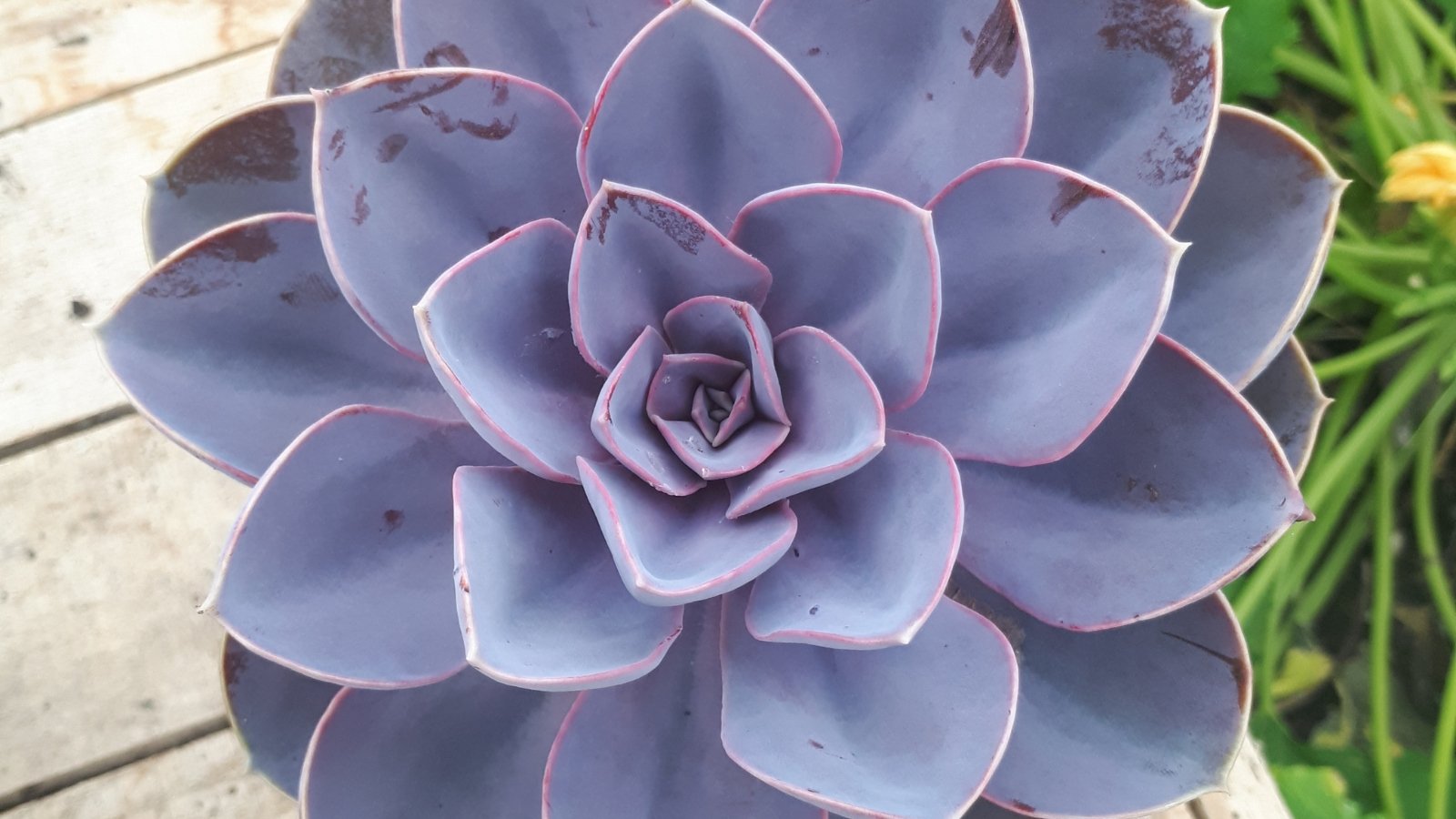
This is my personal favorite and one that I have in my own garden. ‘Purple Pearl’ is a large variety, with rosettes that can grow up to 12 inches across at maturity. The leaves are spoon-shaped and the loveliest shade of lavender. There is pink along the smooth margins of the leaves. It has a glowing appearance as a result.
‘Purple Pearl’ is common in floristry, as it looks gorgeous in a cut flower arrangement. In summer, this cultivar sends up one-foot-tall inflorescences tipped with coral-pink flowers. When stressed by cold or light, ‘Purple Pearl’ takes on more of a pink blush to its purple leaves.
German Champagne
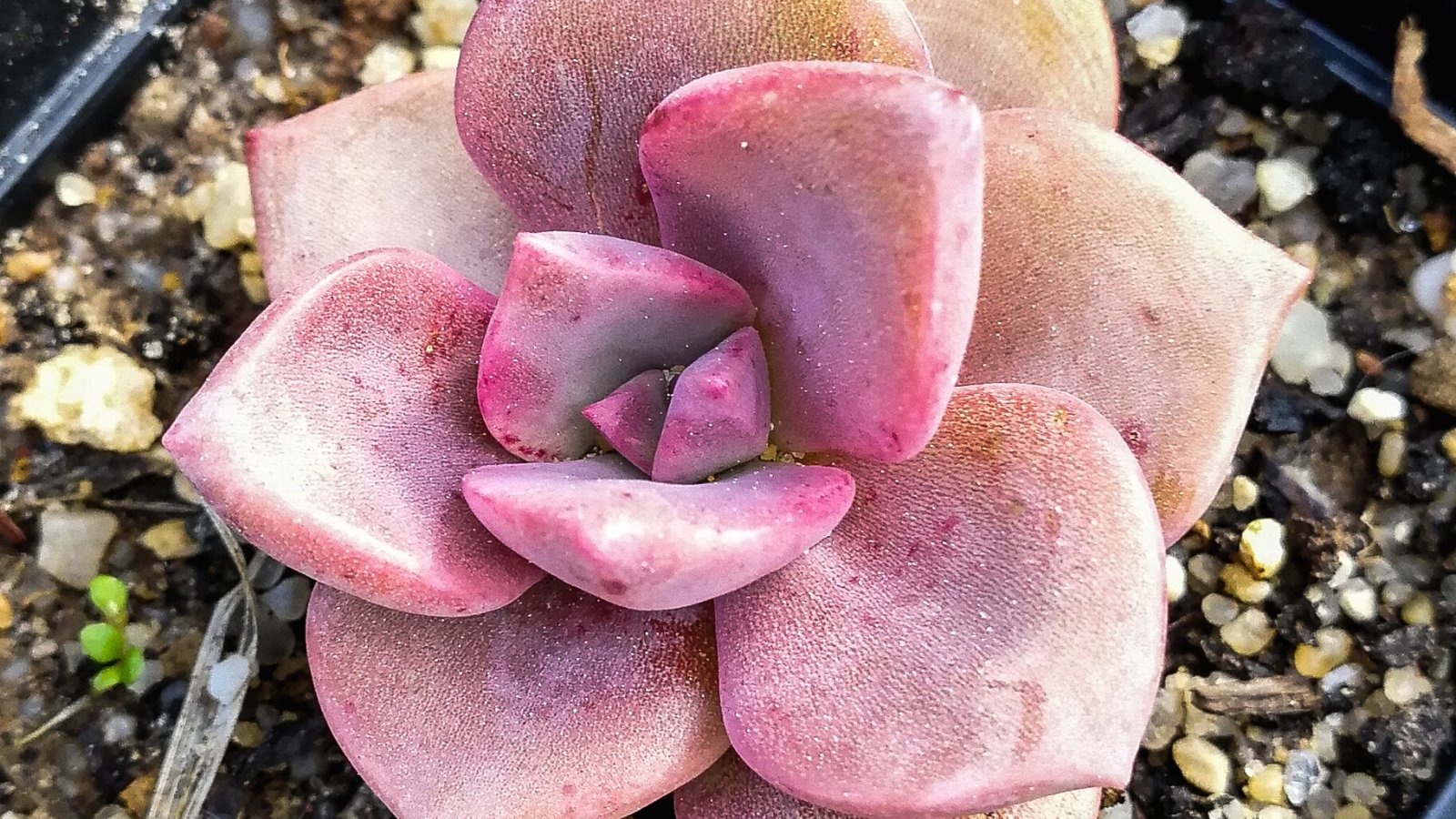
One of the more colorful varieties, ‘German Champagne’ is rare and beautiful. Thick, fleshy rosettes of rose gold have a deep pink center. New leaves emerge nearly red before fading to a more golden hue. The leaves are sometimes lightly speckled and covered with a thin, waxy coating.
‘German Champagne’ is more difficult to find than many popular cultivars. Its distinctive coloring makes it desirable. So, when this variety hits the shelves of the local nursery, they go quickly. It readily puts out offsets, so why not propagate and share this cool echeveria?
Mexican Firecracker
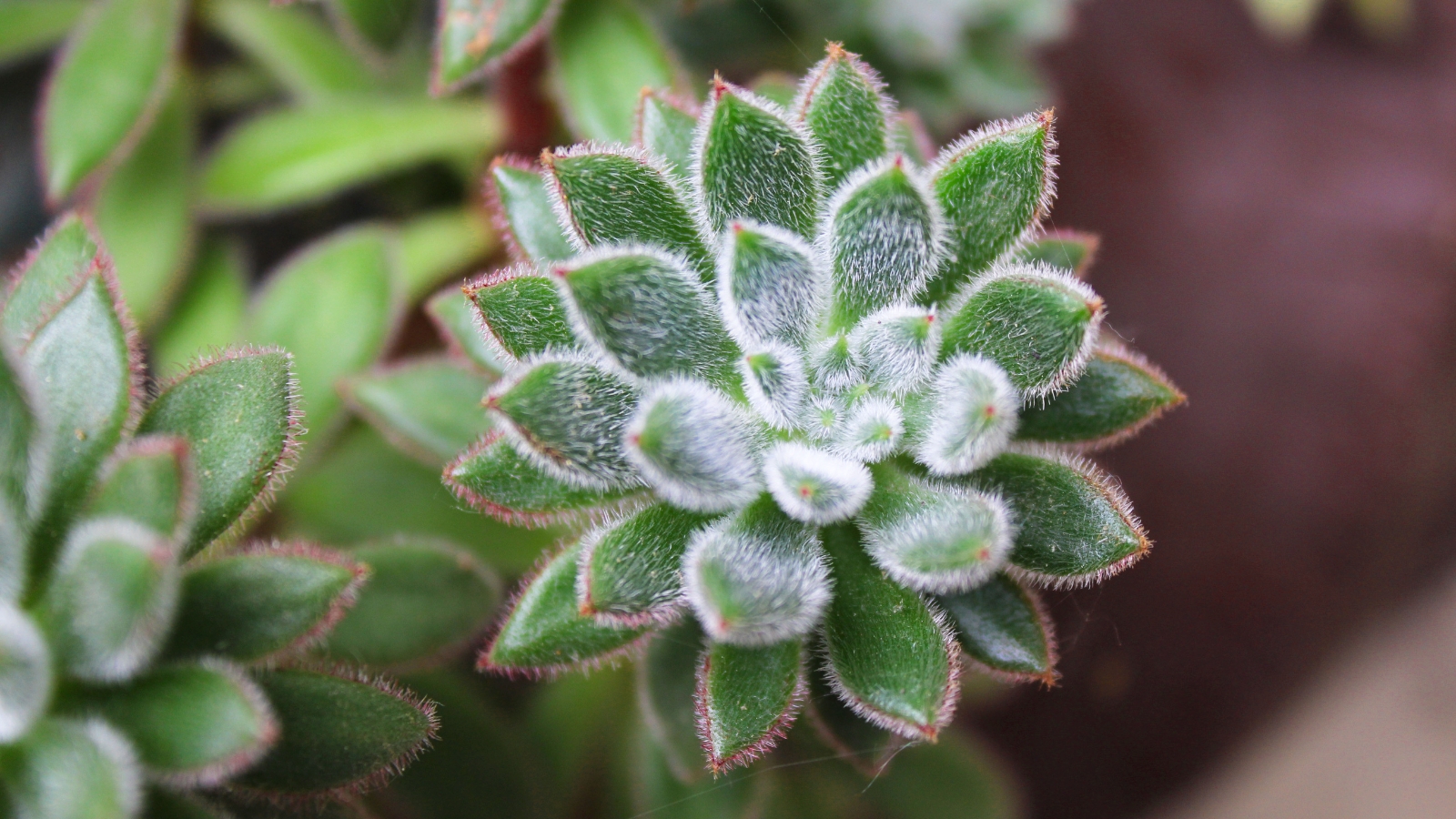
Mexican firecracker plant, or Echeveria setosa, is the only fuzzy variety on our list. Rather than the fine, waxy coating of many types, his one has visible hairs and an overall fuzzy texture. The leaves are narrow and apple-green toward the center. As they age and are exposed to sun or cold, the ends turn red.
This is a pretty cultivar that has a mounding habit. The overall effect is of a very soft and luxurious plant. Mexican firecracker plant tolerates direct sun and will perform well in a sunny window.
Flying Cloud
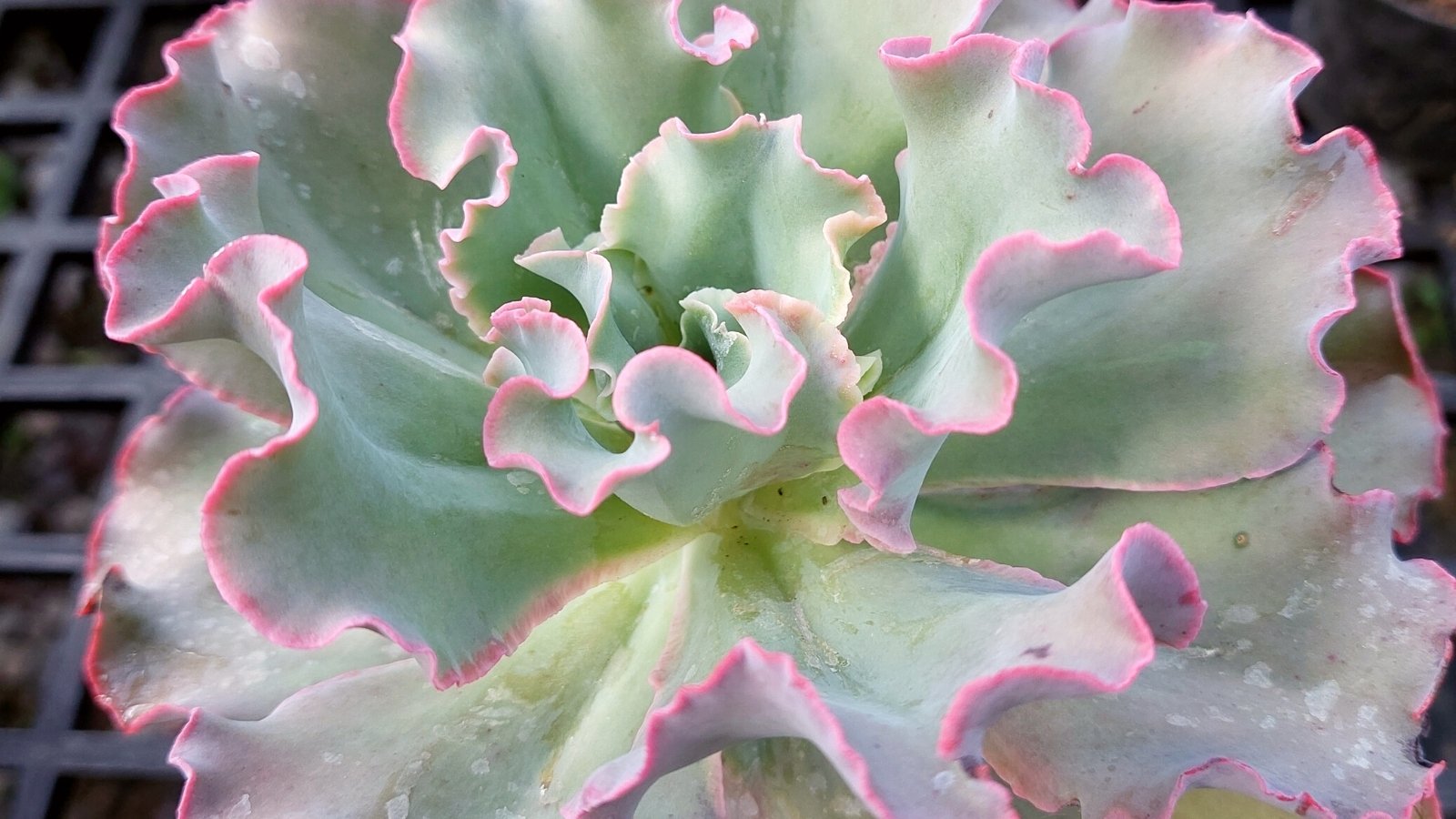
Rounding out our list is ‘Flying Cloud,’ which is a wonderful, variegated echeveria. The loose and rather large rosettes have spoon-shaped leaves with scalloped edges. They have ivory and blue-green variegation with a pink tint to the edges.
‘Flying Cloud’ is typically a solitary rosette and has a short stem. Sadly it’s not as good for floristry as some others. The variegation makes this noteworthy, and it is certain to draw attention. The flowers are coral-red and bloom in the summer.
Final Thoughts
These great little plants practically take care of themselves. Their beauty lies in their beautiful rosette form and stunning floral displays. Once you get started with echeverias, you will want to collect all the different types. I highly recommend growing some and sharing your offsets with other plant-loving friends.




